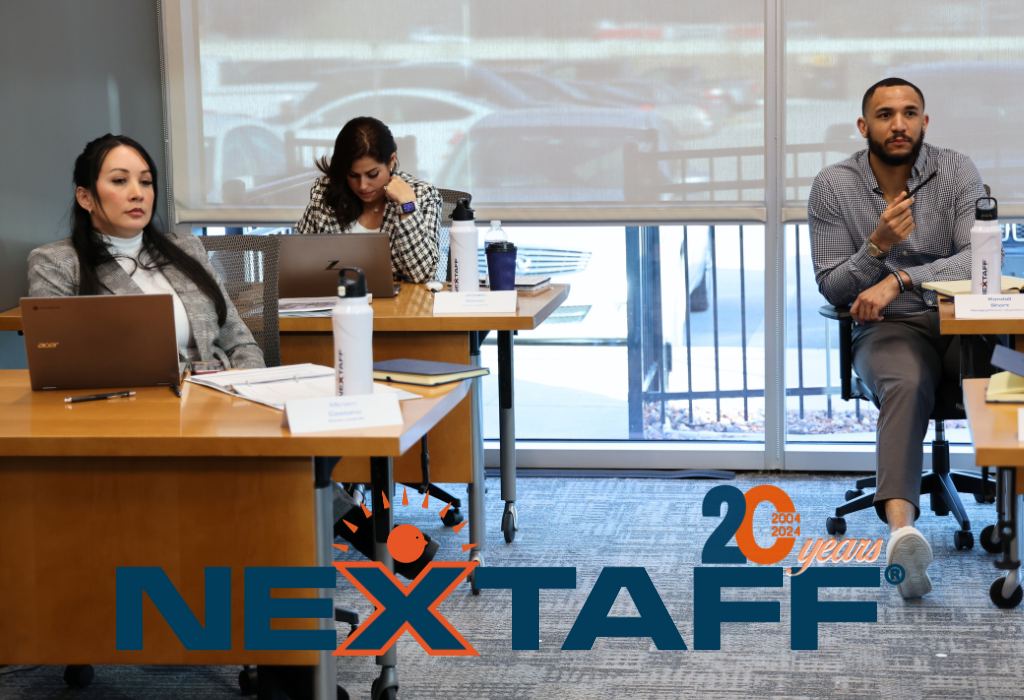In the fast-paced world of staffing, where every moment counts, streamlining the interview process is not just a goal; it’s a necessity. Efficiency in hiring can make all the difference in securing top talent for your organization while saving valuable time and resources. In this comprehensive guide, we’ll explore practical strategies and techniques to streamline your interview process, ensuring that you make the most efficient hiring decisions possible.
Understanding the Importance of Streamlining Interviews
Efficiency isn’t just about saving time—it’s about making the most of every interaction with potential candidates. By streamlining your interview process, you create a smoother experience for both candidates and hiring managers alike. Candidates appreciate clear communication and well-structured interviews while hiring managers benefit from more efficient use of their time. Ultimately, a streamlined interview process sets the tone for a positive candidate experience, enhancing your employer brand and attracting top talent to your organization.
Conducting Pre-Interview Preparation: Key Steps and Strategies
Preparation is the cornerstone of any successful interview process. Before diving into interviews, take the time to clearly define the role requirements and expectations. Craft detailed job descriptions that highlight the essential skills and qualifications needed for the position. By setting clear expectations from the outset, you’ll attract candidates who are the best fit for the role, saving time for both parties involved.
In addition to defining job requirements, develop a standardized interview process checklist. This checklist should outline the steps involved in the interview process, from initial screening to final evaluations. By creating a roadmap for the interview process, you ensure consistency and efficiency across all interviews conducted within your organization. This not only streamlines the process but also helps maintain fairness and objectivity in candidate evaluations.
Crafting Job Descriptions that Attract the Right Candidates
Job descriptions serve as the first point of contact between your organization and potential candidates. To attract the right talent, your job descriptions must be clear, concise, and compelling. Start by identifying the key skills, qualifications, and experiences required for the role. Use language that resonates with your target audience and accurately reflects your company culture and values.
When crafting job descriptions, remember to incorporate relevant keywords related to the position and industry. This will not only help improve your job listing’s visibility in search engine results but also ensure that it reaches the right candidates. By tailoring your job descriptions to the specific needs of the role and your organization, you’ll attract candidates who are genuinely interested and qualified, streamlining the hiring process from the outset.
Leveraging Technology: Tools for Effortless Candidate Screening
In today’s digital age, technology is crucial in streamlining the interview process. From applicant tracking systems (ATS) to video interviewing platforms there are a plethora of tools available to simplify candidate screening and evaluation. These tools automate repetitive tasks, such as resume parsing and initial candidate assessments, allowing hiring managers to focus their time and energy on more meaningful interactions with candidates.
One such technology is the ATS, which streamlines the resume screening process by automatically parsing resumes and identifying top candidates based on predefined criteria. By leveraging ATS technology, you can quickly sift through large volumes of resumes, identify qualified candidates, and move them through the interview process more efficiently.
Another valuable tool for streamlining interviews is video interviewing platforms. These platforms allow you to conduct initial candidate assessments remotely, saving time and resources associated with scheduling and coordinating in-person interviews. Video interviews also offer greater flexibility for both candidates and hiring managers, allowing them to participate in the interview process from any location with an internet connection.
Implementing Structured Interview Techniques for Consistency
Consistency is key to a successful interview process. Implementing structured interview techniques helps ensure that all candidates are evaluated fairly and objectively, regardless of who conducts the interview. Structured interviews involve asking each candidate a standardized set of questions and evaluating their responses based on predefined criteria. By using structured interview techniques, you reduce the risk of bias and subjective judgments influencing hiring decisions. Instead, you focus on the candidate’s qualifications, experiences, and fit for the role. This not only enhances the validity and reliability of your hiring decisions but also promotes a more inclusive and equitable hiring process.
Training interviewers on the use of structured interview techniques is essential to their success. Provide clear guidelines and examples of effective questioning techniques, and offer opportunities for practice and feedback. By empowering interviewers with the skills and knowledge they need to conduct structured interviews, you ensure consistency and fairness throughout the hiring process.
Maximizing Efficiency with Panel Interviews and Group Assessments
Panel interviews and group assessments streamline the process. They offer insights into candidate fit and potential. Multiple interviewers from various departments participate, providing diverse perspectives. By involving multiple stakeholders in the interview process, you streamline decision-making and reduce the time required to evaluate candidates. Panel interviews also promote collaboration and consensus-building among interviewers, ensuring that hiring decisions are well-informed and aligned with organizational goals and priorities.
In addition to panel interviews, group assessments provide valuable opportunities to evaluate candidates’ interpersonal skills, teamwork abilities, and leadership potential. Group assessments typically involve collaborative exercises or simulations that mimic real-world scenarios, allowing candidates to demonstrate their capabilities in a team environment.
Effective Time Management: Scheduling and Coordination Tips
Effective time management is essential to streamlining the interview process and ensuring a positive candidate experience. Scheduling and coordination can quickly become overwhelming, especially when dealing with multiple candidates and interviewers. By implementing strategies to streamline scheduling and coordination, you can reduce administrative overhead and minimize disruptions to the interview process.
One key strategy is to leverage scheduling software and tools designed specifically for interview coordination. These tools automate the scheduling process, allowing candidates to self-select interview slots based on their availability. This not only saves time for hiring managers but also provides candidates with greater flexibility and control over their interview schedules.
Establishing clear timelines and expectations for the interview process is another important aspect of effective time management. Communicate expectations to both candidates and interviewers upfront, including the number of interview rounds, anticipated timelines for feedback and follow-up, and any other relevant details. By setting clear expectations from the outset, you reduce confusion and ensure that the interview process stays on track.
Streamlining Feedback and Evaluation Processes
Providing timely and constructive feedback is essential to maintaining a positive candidate experience and keeping the interview process moving forward. However, collecting and consolidating feedback from multiple interviewers can be a time-consuming and cumbersome task. By implementing this streamline interview feedback and evaluation processes, you can ensure that feedback is collected efficiently and shared with candidates promptly.
One approach to streamlining feedback is to develop structured feedback forms that interviewers can use to evaluate candidates consistently. These forms should include predefined evaluation criteria aligned with the job requirements and competencies being assessed. By standardizing the feedback process, you ensure that all candidates are evaluated on the same criteria, promoting fairness and objectivity in the hiring process.
Establish clear timelines and expectations for providing feedback to candidates, and communicate these expectations to interviewers and hiring managers. Set deadlines for submitting feedback after each interview round, and establish protocols for consolidating and sharing feedback with candidates. By holding interviewers accountable for providing timely feedback, you ensure that candidates receive the information they need to make informed decisions about their candidacy.
Embracing Automation: AI Solutions in the Hiring Pipeline
Automation has revolutionized the way organizations approach the hiring process, offering opportunities to streamline workflows, improve efficiency, and enhance the candidate experience. From AI-powered chatbots to predictive analytics, there are a variety of AI solutions available to streamline various aspects of the hiring pipeline. One area where AI has had a significant impact is candidate sourcing and screening. AI-powered algorithms can analyze vast amounts of candidate data to identify top talent, match candidates with suitable job opportunities, and predict candidate success based on historical data and performance metrics. By leveraging AI for candidate sourcing and screening, organizations can quickly identify qualified candidates and expedite the hiring process.
Chatbots are another valuable AI tool for streamlining the hiring pipeline. Chatbots can engage with candidates in real-time, answering frequently asked questions, providing updates on the status of their applications, and even scheduling interviews. By automating routine tasks, chatbots enhance the candidate experience. They provide immediate support, freeing up valuable time for hiring managers.
Continuous Improvement: Analyzing Metrics and Refining Procedures
Continuous improvement is vital for optimizing the interview process. It helps stay ahead in today’s competitive job market. By analyzing key performance metrics and soliciting feedback from stakeholders, you can identify areas for improvement and implement changes to enhance the efficiency and effectiveness of your hiring process. Start by identifying key performance indicators (KPIs) that are relevant to your hiring goals and objectives. These may include metrics such as time-to-fill, offer acceptance rates, and candidate satisfaction scores. By tracking these metrics over time, you can identify trends, pinpoint areas of inefficiency, and make data-driven decisions to improve your hiring process.
In addition to analyzing metrics, solicit feedback from hiring managers, interviewers, and candidates about their experiences with the interview process. Conduct surveys or hold focus groups to gather insights into what’s working well and where there are opportunities for improvement. By involving stakeholders in the feedback process, you foster a culture of continuous improvement and demonstrate your commitment to creating a positive candidate experience.
Based on your analysis of metrics and feedback, identify specific areas where process improvements can be made. This may involve refining interview questions, updating job descriptions, or implementing new technologies to streamline workflows. By continuously refining and iterating your interview process, you can stay agile and responsive to changing hiring needs and market dynamics, ensuring that you remain competitive in attracting and retaining top talent.
Conclusion to Streamline Interviewing
I want you to know that understanding the significance to streamline an interview is crucial. Additionally, conducting thorough pre-interview preparation lays a solid foundation. Moreover, leveraging technology effectively enhances efficiency. Furthermore, implementing structured interview techniques ensures consistency. Likewise, maximizing efficiency with panel interviews and group assessments fosters collaboration. Additionally, practicing effective time management is essential for smooth operations. Moreover, streamlining feedback and evaluation processes facilitates clarity. Embracing automation further enhances the hiring experience. Lastly, continuously improving procedures ensures ongoing enhancement.
At NEXTAFF, we understand the challenges of hiring in today’s competitive job market. That’s why we’re committed to helping organizations streamline their interview processes and make hiring as efficient as possible. Contact NEXTAFF to Schedule a Discovery Call Today! Learn more about our innovative staffing solutions and how we can help you attract and retain top talent for your organization.












